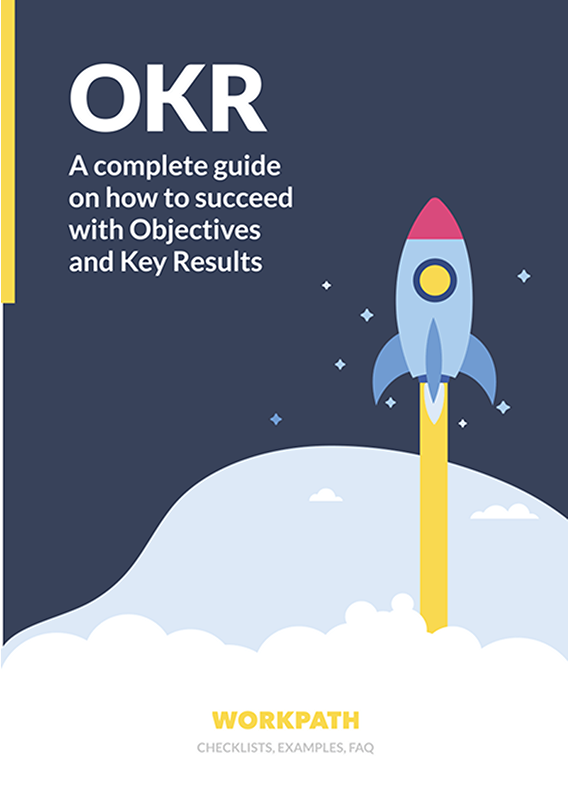What makes good strategy, and why do great strategies so often get stuck in execution? “Strategy beyond the hockey stick” provides a thorough analysis of these questions, as well as tangible advice on how to avoid the “hairy back graph”
I find the main value of the book in its simple themes, built on the profound expertise of its authors and the enterprise data they analyze. Despite the relatively short time frame of the analysis, which might be a limiting factor, the insights presented underline what we experience in our work with enterprises at Workpath.

McKinsey partners Chris Bradley, Martin Hirt and Sven Smit analyzed the data of more than 2,300 organizations, searching for the patterns that make some companies leaders on what they call the Power Curve. Those businesses are in the top quintile of economic profit, which in the book is used as the main indicator of good strategy and execution.

Building on these data, the book describes the odds for companies to move from low or medium performance to the top, and it identifies 10 variables (86% accurate in predicting companies' movements on the Power Curve) that make the difference.
While Bradley, Hirt and Smit also discuss the human biases that influence and divert the conversations in the strategy room, the main part of “Strategy beyond the hockey stick” explains the 10 most influential factors that make a successful strategy. It also provides 8 practical shifts for leadership teams to improve their strategy development and execution right away.
Below you can find a summary of both of these parts, and some more first-hand insights and examples of how we see enterprises and leadership teams working with Workpath to implement the advice from the book.
Ten variables that make a successful strategy
The 10 most influential variables are split into three main categories.
- Endowment: The authors claim that size does matter and explain that the larger the company, the more likely it is that the right moves will improve the business’s position on the Power Curve. Less debt and high investments into R&D (relative to your industry and competition) are further important drivers.
- Trends: Leveraging industry trends is the most critical of all 10 attributes, but also being at the forefront of geographic trends and micro trends (e.g. in sub-segments of an industry) matters. The book suggests that particularly in declining industries, redefining the industry or switching into other industries might be the only winning strategy.
- Big Moves: 5 types of big moves, from programmatic M&A to dynamic resource allocation and improved differentiation, are described as further attributes that make the most successful strategies. The book describes examples of the most successful companies, regularly combining at least 3 to 5 types of big moves in their strategy.
These factors can be used to develop a score for every company, predicting its odds for success and its mobility on the Power Curve. The model provides business leaders with a diagnostic tool to assess their strategic positioning and identify which levers will most significantly impact their odds of ascending to the top quintile of economic profit. Companies can use this framework to score their strategic plans and realistically evaluate their potential for performance improvement.

Eight practical shifts to unlock strategy and change the dynamics in the strategy room
From our work at Workpath we can tell that most enterprises today build their strategy on extensive data and expertise, so they already implement many of the insights described above. However, when it comes to executing strategy and iterating on it (usually when the strategy consultants are gone again), there are still massive challenges.
So here are the eight shifts recommended in the book, some enriched with further practical examples of how our customers implement them:
- From Annual Planning to Strategy as a Journey
Strategic decisions, as well as the developments that should influence strategy, do not follow the rigid corset of a cyclical strategy process. The most successful companies we work with have decluttered and simplified parts of their strategy development process (every 2–5 years), but established new forms of strategic conversations (e.g. Monthly and Quarterly Business Reviews, Monthly Performance Dialogues) where they monitor their portfolios of initiatives, analyze progress and issues along the underlying driver trees (“impact chains“), and ensure accountability with clearly tracked measures and activities in Workpath.
- From Getting to “Yes” to Debating Real Alternatives
The book suggests framing strategy as a set of hard-to-reverse choices, and to track and regularly re-evaluate the assumptions made by the management team behind those. The majority of leading companies, achieving top quintile goal achievement in Workpath, understand their portfolios of targeted outcomes (intended to drive top-level business impact) as short to mid-term hypotheses, not as fixed investments. Instead of locking them in with sandbagged targets and for 12 months or longer, they define ambitious but measurable outcomes to re-evaluate and re-prioritize their contribution towards top-level goals every 3 to 6 months. Every cycle, learnings from internal and external data are reviewed and real alternatives for the next goal setting cycle discussed.
- From Peanut Butter to Picking your 1-in-10s
With good arguments, the authors insist instead of spreading investments thinly and broadly (like peanut butter), the big moves and real strategic bets need to receive disproportionate financing. Another suggestion from the book, we at Workpath have seen many organizations improving their strategic investment muscle with, is to create company wide portfolios of initiatives that are centrally evaluated by their potential impact and risks, relatively independent of the business units and managers responsible for each. This leads to a more focused discussion on strategic choices and aspired outcomes, avoiding local optimization for budget or risk.
- From Approving Budgets to Making Big Moves
Too often, the authors claim, the strategy process is only treated as an opening act for the budgeting process. The more integrated those two processes are in the beginning, the more likely it is your annual budget (regularly based mostly on last year‘s numbers) will pull down your strategic plan and you will not activate the initiatives and funding required to make big moves happen. Hence, the authors recommend avoiding “a base case” and to separate those discussions: big moves first, budget second.
- From Budget Inertia to Liquid Resources
This shift provides a recommendation that was also shared in our previous webinar on “Organizational Capabilities” (Capability 3: Adaptive Outcome Based Budgeting): moving towards something like an “80 percent-based budgeting” approach, allows organizations to keep back resources for important strategic investments, and to invest more into initiatives and outcomes that have proven successful in the first few strategy sprints of a new cycle. Indeed, while many executives we meet with Workpath, still a lot of CFO and Finance teams only slowly seem to adopt the idea. The authors, however, underline that “the handover between strategy and execution happens when the resources are made available to follow through on big moves. Execution can then begin, and managers can be held accountable. They no longer have the excuse of resource constraints.“
- From Sandbagging to Open Risk Portfolios
This shift can be considered related to some recommendations made in shifts 3, 4, and 7. Similarly to shift 5, however, the suggestions on adjusted management incentives to avoid local optimization and sandbagging, in our work with customers we still see many corporates sticking to more traditional approaches. What can help make this shift easier, is to establish a more transparent and measurable portfolio overview regarding strategic initiatives, progress and impact, as you can set it up and monitor in Workpath‘s Analytics Suite.
- From You Are Your Numbers to Holistic Perspective on Performance
This chapter provides some great examples of team-driven performance assessments (e.g. from Gore-Tex) that consider not just the ultimate results, but also the level of calculated risks taken. Besides team incentives for longer time horizons, the authors also suggest the new approach of an “unbalanced scorecard”, that not only looks into financial metrics, but also strategic bets and their respective risks. Many of our customers use Workpath‘s Conversation Module and the Analytics Suite to conduct more continuous and more holistic performance dialogues based on these principles, for the C Suite and their direct reports, but also on the levels below.
- From Long-Range Planning to Forcing the First Step
As the final shift, the book recommends putting a disproportionate focus on the first steps when discussing long-term plans. As proposed by the authors, over the last 5 years we have seen more and more leadership teams focusing more on the initial milestones and leading indicators to be evaluated after 3 to 6 months, instead of just monitoring lagging financial metrics (“looking into the rearview mirror“). For this context, Workpath‘s AI-based goal setting module enables teams on all levels of the organization to make sure their main priorities can be broken down into actionable short-term steps and that guiding lead metrics can be found that allow fast progress and early learnings.
Conclusion: From Strategy to Execution
“Strategy Beyond the Hockey Stick” offers a data-driven approach to strategy that challenges conventional wisdom and provides practical guidance for business leaders. By focusing on the ten key variables and implementing the eight shifts, organizations can dramatically improve their odds of moving up the Power Curve. What makes this book particularly valuable is how it bridges the gap between strategy formulation and execution—a challenge we see daily at Workpath.
Through our work with leading enterprises, we've observed that companies who embrace these principles and support them with the right execution infrastructure are significantly more likely to translate their strategic ambitions into tangible results. The book's emphasis on making big moves, allocating resources dynamically, and maintaining strategic agility aligns perfectly with modern execution methodologies that prioritize measurable outcomes over rigid plans. For leaders looking to move beyond hockey stick projections to sustainable growth, this book offers both the analytical framework and practical wisdom to make that journey possible.





